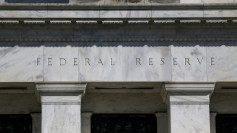A key measure of U.S. wholesale inflation showed a modest increase in July, adding further momentum to the possibility of the Federal Reserve lowering interest rates in the near future. The Producer Price Index (PPI), which tracks the prices producers receive for their goods and services, rose by 0.1% last month, according to the Labor Department's Bureau of Labor Statistics (BLS). This increase fell short of economists' expectations, who had forecasted a 0.2% rise.
On an annual basis, the PPI advanced by 2.2%, marking a significant slowdown from the 2.7% increase recorded in June. This easing of wholesale inflation adds to the growing optimism that inflationary pressures are subsiding, potentially paving the way for the Federal Reserve to begin cutting interest rates, possibly as early as September.
Stock market futures reacted positively to the news, with a noticeable uptick following the release of the data. Treasury yields, on the other hand, moved lower, reflecting investor expectations that the Federal Reserve might adopt a more accommodative stance in the coming months.
The relatively tame inflation reading came despite a notable 0.6% jump in final demand goods prices, the largest such increase since February. This surge was primarily driven by a 1.9% rise in energy prices, including a 2.8% hike in gasoline costs. However, this was offset by a 0.2% decline in service prices, which saw their most significant drop since March 2023. Specifically, trade service prices fell by 1.3%, and margins in the machinery and vehicles wholesaling sector tumbled by 4.1%.
The PPI is often seen as a leading indicator of inflation trends, as it captures price changes from the perspective of manufacturers and suppliers. This index provides insight into the pipeline inflation that may eventually reach consumers. On Wednesday, the Bureau of Labor Statistics will release the Consumer Price Index (CPI), which will offer a clearer picture of inflation at the retail level, focusing on the prices consumers pay for goods and services. Economists are predicting a 0.2% monthly increase in both headline and core CPI figures.
The Federal Reserve closely monitors various inflation gauges, including the PPI and CPI, to inform its monetary policy decisions. Although the Fed pays particular attention to the Commerce Department's Personal Consumption Expenditures (PCE) Price Index, the PPI and CPI contribute to the broader inflation narrative that influences the Fed's actions.
The recent inflation data has fueled speculation that the Federal Reserve could implement a rate cut at its upcoming September meeting. The futures market is currently divided on whether the Fed will opt for a quarter-point or a half-point reduction in the benchmark interest rate. The central bank has maintained its commitment to fighting inflation until it achieves its 2% target, and recent data suggest that the Fed's efforts are yielding results.
Adding to the mix, a survey released by the New York Federal Reserve on Monday revealed that consumers' three-year inflation expectations fell to 2.3%, the lowest level since the survey began 11 years ago. This decline in inflation expectations is a positive sign for the Fed, as it indicates that consumers and businesses alike are beginning to anticipate a more stable pricing environment.
However, the survey also highlighted that inflation continues to pose challenges, particularly for lower-income households. The perceived likelihood of missing a minimum debt payment in the next three months increased to 13.3%, the highest level since April 2020. This rise was most pronounced among households earning less than $50,000 annually. Additionally, expectations for credit access declined, and household spending projections for the next year fell to their lowest level since April 2021.
Despite these concerns, the overall trend in inflation suggests that price pressures are easing. Economists and investors alike will be closely watching the upcoming CPI data for further confirmation of this trend, as it will play a crucial role in shaping the Federal Reserve's next move.






